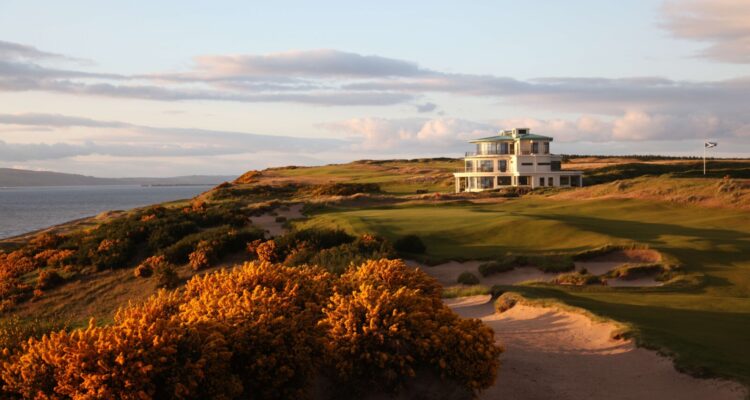Following a change of ownership last year, the golf club formerly known as Castle Stuart has been reborn as Cabot Highlands. And although the name has changed, the club’s unwavering commitment to offering a five-star experience on and off the links remains securely intact, while plans for a second championship course, and the addition of luxury accommodation, looks set to ensure that this highland gem, which is located just five minutes from Inverness Airport, becomes an even more sought-after golfing destination
 By its very nature, the process of changing the brand name of a consumer product has to happen virtually overnight, with the old stock taken off the shelf one day and reappearing with new packaging the next. The same, as it became all too apparent on my recent trip to the venue formerly known as Castle Stuart, cannot be said of a golf club, where several conversations made reference to ‘Castle Stuart’ only for the speaker to quickly correct themselves with ‘Cabot Highlands’ and a nervous laugh, much in the same way as I did when asking for a Marathon Bar in my local corner shop long after everyone else was chomping down on a Snickers.
By its very nature, the process of changing the brand name of a consumer product has to happen virtually overnight, with the old stock taken off the shelf one day and reappearing with new packaging the next. The same, as it became all too apparent on my recent trip to the venue formerly known as Castle Stuart, cannot be said of a golf club, where several conversations made reference to ‘Castle Stuart’ only for the speaker to quickly correct themselves with ‘Cabot Highlands’ and a nervous laugh, much in the same way as I did when asking for a Marathon Bar in my local corner shop long after everyone else was chomping down on a Snickers.
To confuse matters still further, while the resort itself was rechristened Cabot Highlands in June of last year, the golf course, which first opened in 2009, is called the Castle Stuart Golf Links. All this matters not a jot, but having hosted four editions of the Scottish Open in the early part of its life, it will undoubtedly take some time for some past visitors to refer to this stunning highland venue by its new moniker without feeling somewhat unfaithful to what came before.
While the Cabot name will be unfamiliar to many UK golfers, it is one that is enjoying increasing recognition in North America, with the Toronto-based company building a burgeoning portfolio of golf courses and resorts around the world since it was founded by Canadian entrepreneur Ben Cowan-Dewar and course development specialist Mike Keiser in 2011. With two clubs in Canada (Cape Breton in Nova Scotia and Revelstoke in British Colombia), one in the US (Citrus Farms in Florida), and another in St Lucia (Point Hardy), Cabot’s purchase of Castle Stuart in 2022 represented a significant shift in the company’s geographical interests, but one that Cowan-Dewar admits was too hard to overlook when the opportunity to buy the Inverness-based venue came up following the untimely death of its original owner and founder, Mark Parsinen, in 2019.
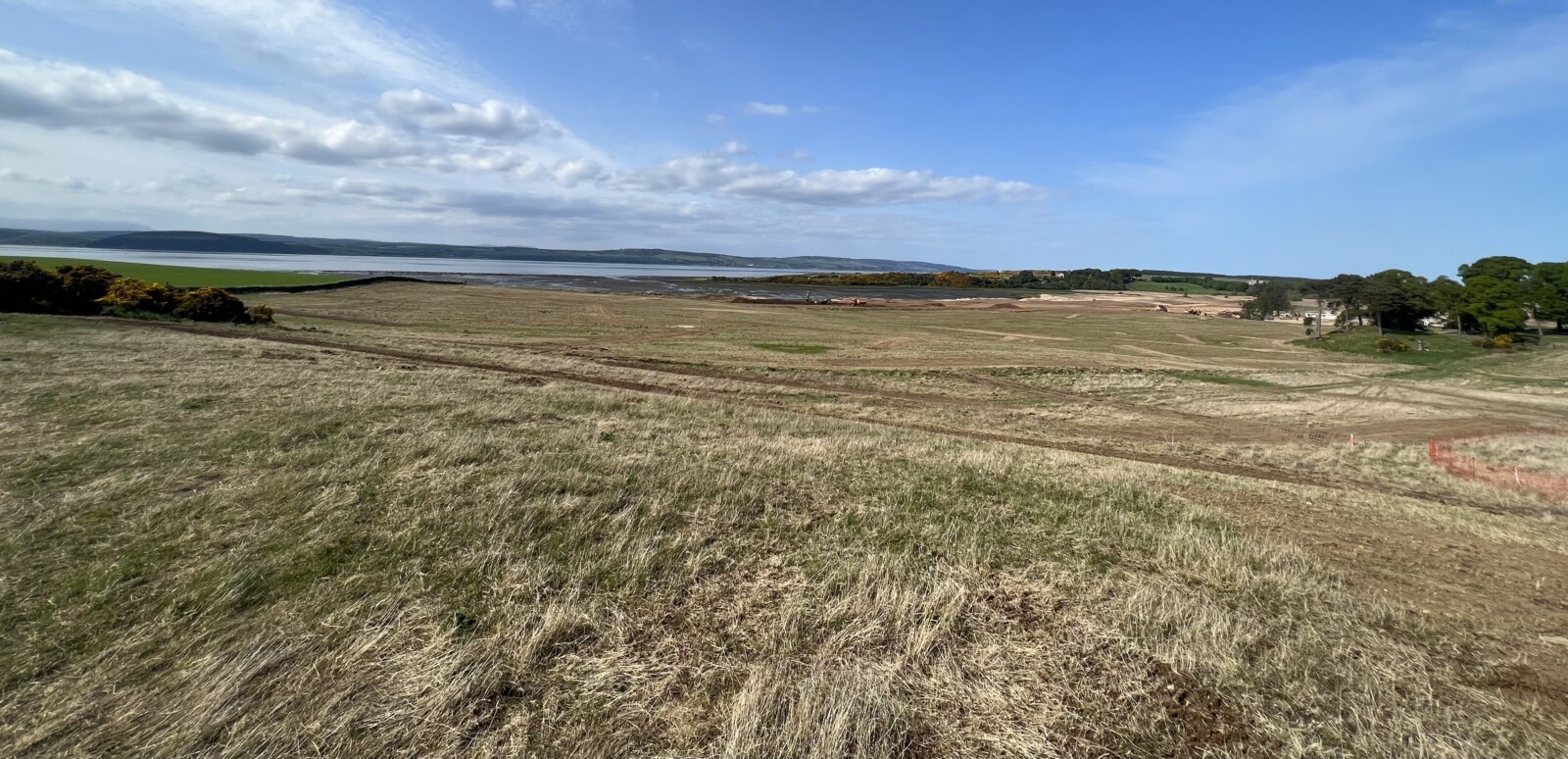
“Scotland has long had great appeal to me, both as a golfer and just a lover of the country,” says Cowan-Dewar, a 36-year-old Canadian with Scottish heritage. “I’ve spent a lot of time there, travelling around and playing golf, but I think there was always a special magic in the Highlands for me. I actually walked the course in 2009, just before it opened. I sort of marvelled at it and I spent some time with Mark [Parsinen]. I sort of felt a kinship with it because it opened around the same time as our Cabot Links in Nova Scotia, and both are modern courses built close to the sea. From that initial tour, it had always stuck in my mind and, when the opportunity came about, the chance to do something in Scotland was just too good to be true.”
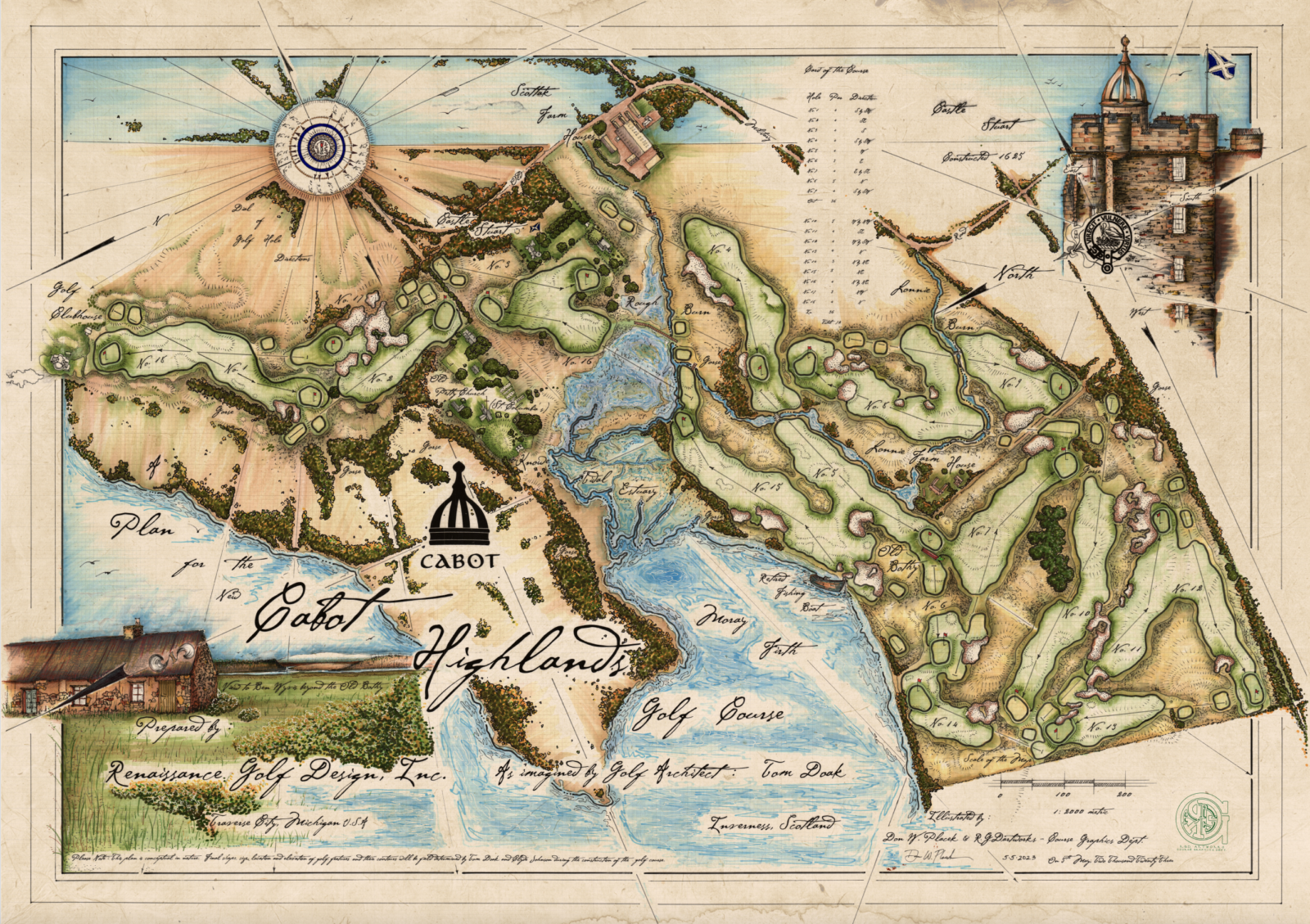
Since the change of ownership, things have moved on apace at Cabot Highlands, the most significant of those things being the hiring of American golf course architect Tom Doak to design a new 18-hole championship course that will sit alongside the Castle Stuart Golf Links. Part of Parsinen’s long-term plans before his death, the new and, as yet, untitled course, is scheduled to open in 2025. It will occupy a tract of land to the west of the original course, circling around the estate’s eponymous castle and swinging down to a stunning stretch of holes besides the Moray Firth.
For Cowan-Dewar, who started out as golf tour operator before establishing his golf development company, it’s the sort of opportunity that doesn’t crop up very often and not just in Scotland. “If you think about the number of courses that have been built while I’ve been alive that are in the top 100 in the world, the vast majority existed before I was born,” he says. “There are very few that change hands, and many of them are private clubs owned by members, so the chance to do the second course and get Tom Doak to come to Scotland and build on the foundations of what is already in place, is extremely rare in a global context.”
Although still in the very early stages of construction during my visit in June, a brief tour of the estate in a 4×4 revealed the massive potential for this new site to provide a perfect addition to its illustrious neighbour, which currently occupies 19th spot in the UK & Ireland’s Top 100 Courses ranking list. With plenty of elevation changes, stunning views, tantalising glimpses of the 400-year-old castle, and the opportunity to lay out a run of holes right beside the water’s edge, Doak must have rubbed his hands with excitement when he first clapped eyes on the majestic landscape before him.
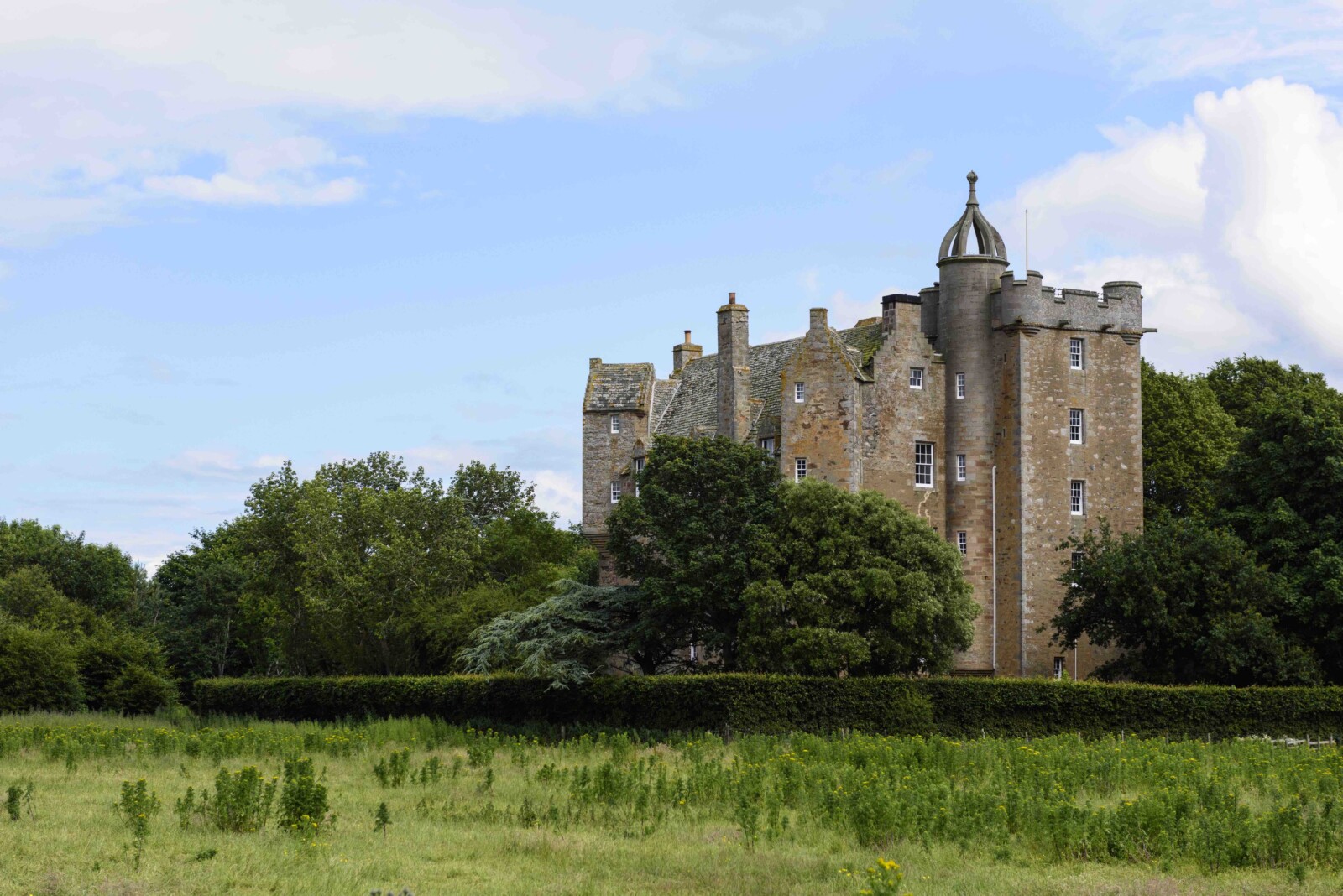
Asked how the two courses will complement each other, Cowan-Dewar adds: “It is a very different site in many ways, but it’s an amazing site and is physically beautiful. Golfers will start out from the same clubhouse and the current driving range will become part of the opening and closing holes of Tom’s course. From the highest point, which is set to be the 13th tee, players will be able to see the 3rd green of Castle Stuart, with views stretching across to the Black Isle. Then it will play down around the castle, then along the water. Unlike the existing course, where almost every hole plays straight back or straight into the wind, the new course will have holes where players will battle a crosswind, further adding to the challenge.”
For now, and until the new course opens in 2025, golfers visiting Cabot Highlands will have to content themselves with playing the Castle Stuart Golf Links, which is a modern masterpiece and a must-play links on any Highland golfing itinerary. Designed by Mark Parsinen in collaboration with architect Gil Hanse, the Castle Stuart course is a rarity among links in that it has been built on two levels: one, right up against the Moray Firth, and another on the ground high above, which offers the most spectacular panoramic views – something also not associated with more traditional links, whose fairways often sit below the level of the dunes and rarely offer much interaction with the sea.
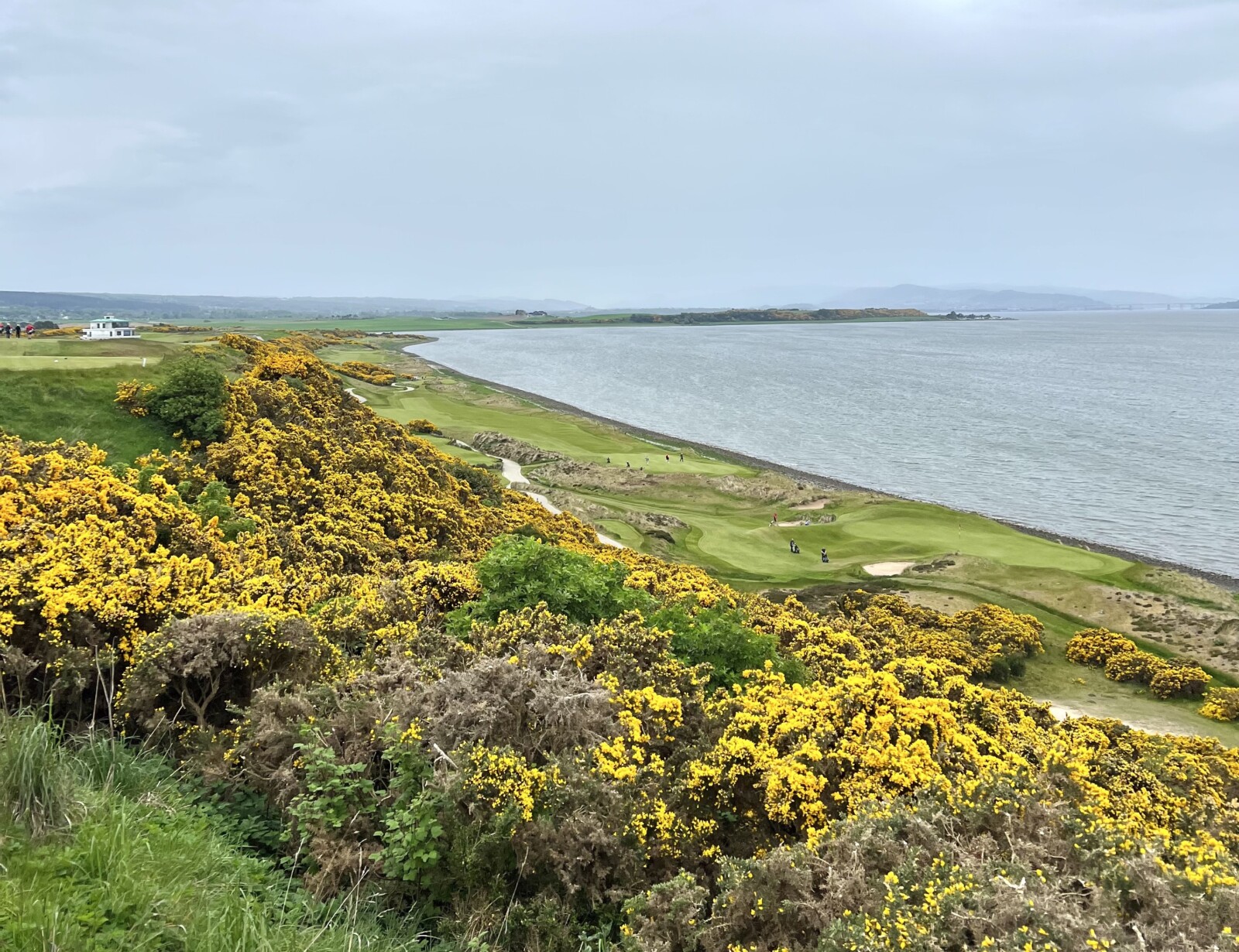
The course is laid out in two loops. The first three holes all play down by the water’s edge and away from the clubhouse towards Inverness, before turning back inland and, finally, towards the iconic art-deco styled clubhouse. The back nine largely mirrors the front. Happily, for this correspondent at least, the emphasis appears to be on playability and enjoyment rather than on remorseless grind. With wide fairways, generous landing areas and thinned out rough, you can afford to be a little wayward off the tee, but the test gets significantly tougher the closer you get to the green, many of which feature double tiers and severe run-offs to fend off all but the most accurate approach shots.
While there are no weak holes to talk of, the highlight holes for me, of which there are plenty, include the driveable par-4 third, which is down by the water’s edge; the sixth, a 552-yard par five which is played to a long, narrow green that sits between a pair of waste bunkers; while on the more elevated back nine, the 220-yard 17th is another cracker, and serves to bring the round towards a suitable climax.
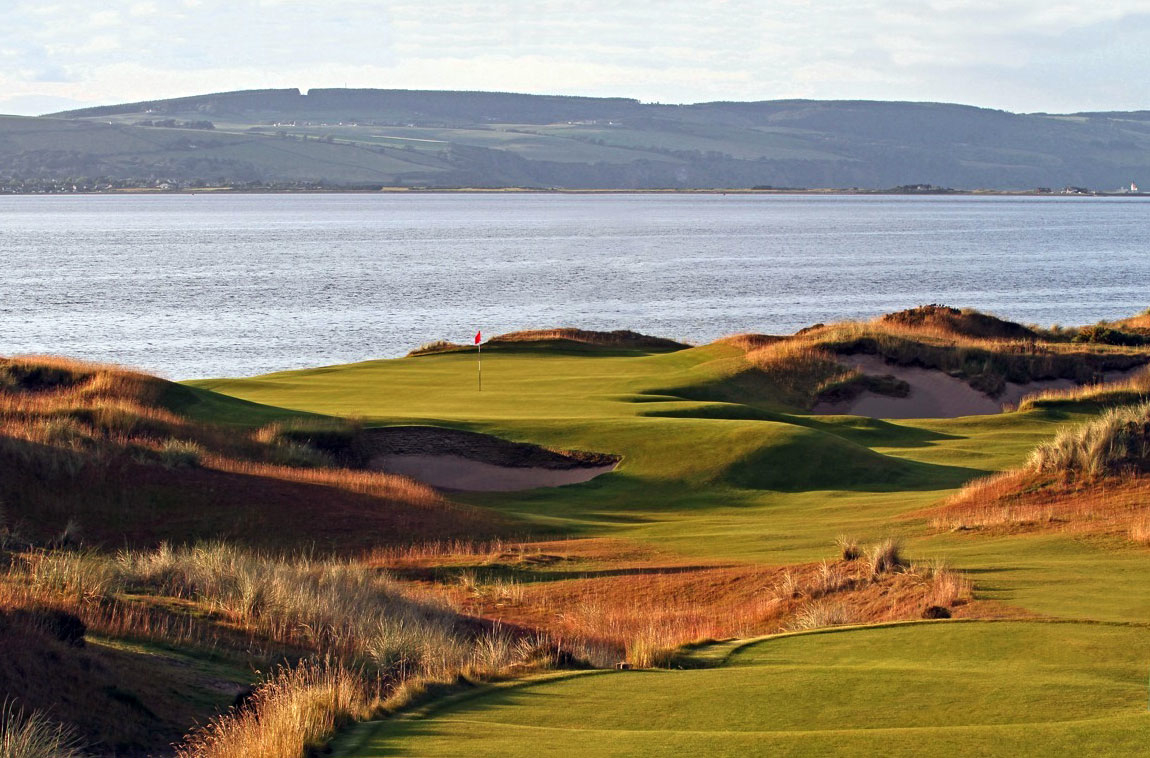
I had to good fortune to play the course on a windless summer’s day, so was sparred a 20mph chill wind whipping off the Moray Firth that can no doubt wreak havoc to a scorecard, but whatever the weather and whatever your score, it’s a course that will live long in the memory. Yes, it’s by no means a traditional links of the type you will find at Dornoch or Nairn, and is more heathland in places, but it has its spot in the pantheon of courses and its presentation is top notch to boot.

One of the many upsides of having not just one, but two 18-hole championship courses on the estate will be to turn Cabot Highlands into an instant ‘destination’ in its own right, and not just somewhere to play en route to the Highland’s other famous venues. While it is quite possible to play two rounds in a day, especially during Scotland’s lengthy summer days, having 36 holes in one location also affords the opportunity for golfers to tarry awhile, hence Cabot’s plans to expand its current accommodation offering to include 16 new luxury lodges, a restaurant, and maybe a hotel down the line.
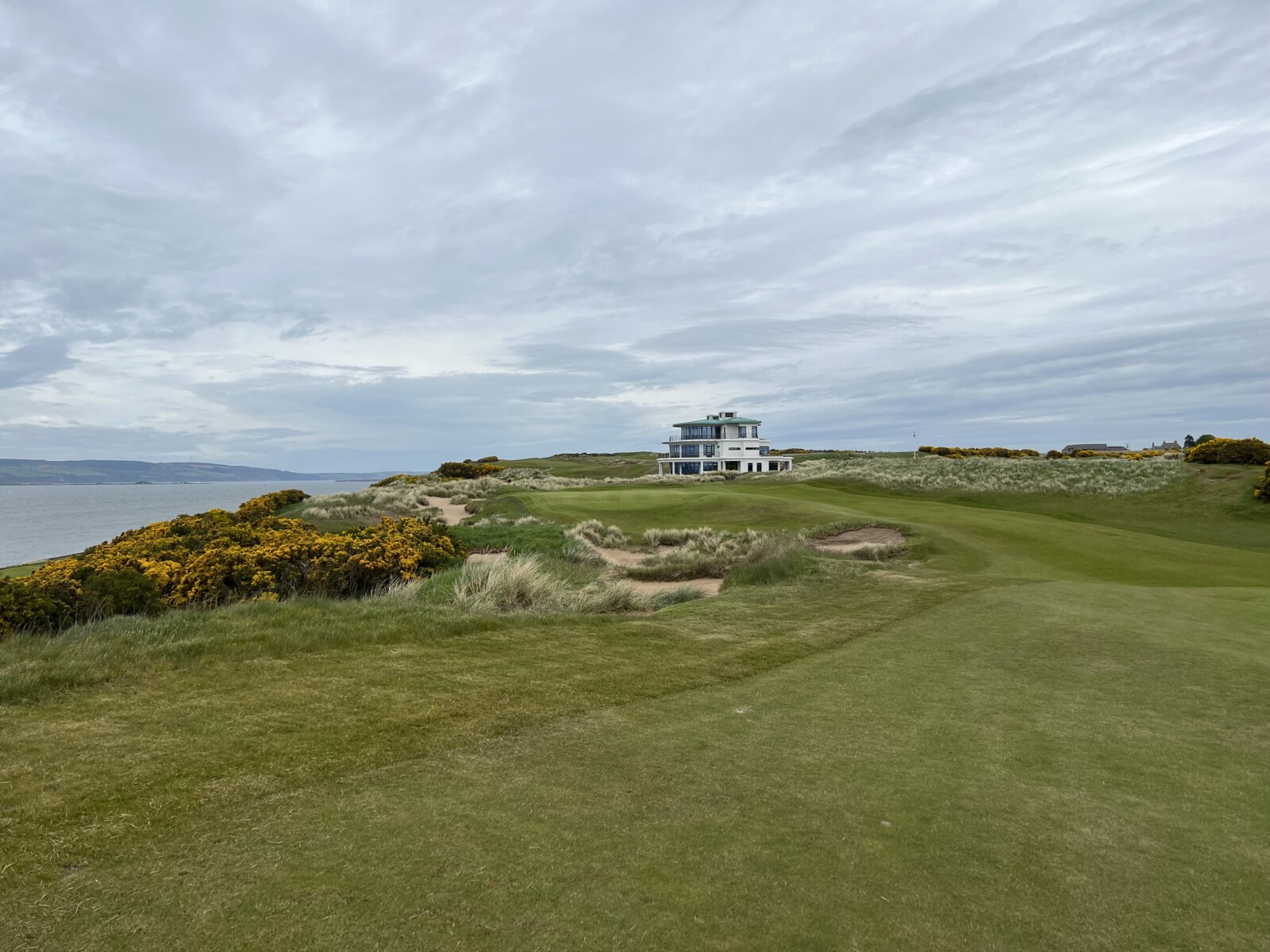
While the new golf course and the added accommodation will be another two years in the making, the new owners have wasted no time instilling its influence on clubhouse operations. Among the many Cabot touches include the unusual sight of a collection of sofas just a few yards to the left of the 18th green. Called ‘Cabot Couches’, this comfortable seating arrangement is something visitors to all Cabot venues will be familiar with, and provides a welcome moment to savour your round, have a quick drink and soak in the views one more time before you head into the more formal area of the clubhouse. Other Cabot touches include the offering of a ‘Cabot cookie’ – a biscuit if you prefer – at the starter’s hut, which goes nicely with a hot chocolate or a hot toddy.

The impressive clubhouse provides a homely welcome at any time of the year, but I expect is an even more welcome sight when the temperature drops. The first floor changing room must offer one of the best locker room views in golf, and it didn’t surprise me to learn that it will most likely become a restaurant when the full extent of Cabot’s planned changes come to fruition.
While there are is a four-bedroom cottage on site for golfing groups to stay in, if that is booked up golfers looking to stay nearby can head to the recently opened AC Marriott Hotel in Inverness, which is just a 20-minute drive from the course along the A96 and enjoys a stunning location beside the River Ness. Rooms here, including bed and breakfast, start from £89.
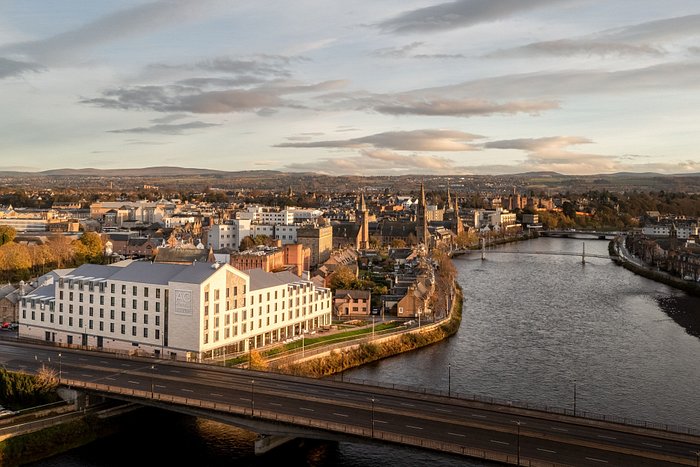
Visitor green fee rates for 2024 are £225 for 18 holes between March 24-April 30, and £295 from May 1 – Oct 31. A two-round package and an overnight stay for eight guests in the 4-bedroom lodge costs from £405pp. The course is closed from November 1 – March 23. For more details, visit www.cabothighlands.com.



